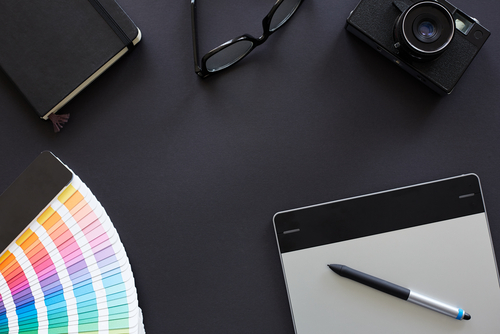5 Resume Tips for Graphic Designers
Graphic design is a creative field, which means your resume does more than just demonstrate your work history, education and other qualifications. It also gives you the chance to show off your skills. If you’ve been regularly sending out resumes, and you haven’t received any calls for interviews, your resume may need a makeover.
Use Professional Design Software and Formatting
Microsoft Word comes with templates that make it easy to create a resume, but this option won’t likely impress someone who is considering hiring you as a designer. Art directors and other professionals can tell whether you’ve used Word or a more advanced program, such as Illustrator or InDesign, to create your resume. You want to look professional, so be sure to do what the professionals do! If sending your resume online, use PDF format. A PDF file will work on any platform, ensuring that your potential employer won’t have any technical problems while attempting to view your resume.
Choose Quality Paper
When creating physical resumes, be sure to use a nice paper stock. You want to present yourself as a professional who can create quality work. Choosing a nice paper stock is a great way to do that. Your potential employer will be able to feel the difference in your resume compared to the others that were done on regular printer paper. The effect is subtle, but anything that makes you stand out above the rest will help you get an interview.
Show Off Who You Are
While it’s important to keep the resume professional, you don’t want to miss out on an opportunity to make yourself shine. Your resume design allows potential employers see your personality as well as your design skills. Don’t be afraid to use colors, fonts and other design elements to make your resume your own, but remember to keep it professional. A resume doesn’t have to be over the top to be unique. Stick to two or three colors, and make sure your font is easily readable.
Include Work Samples
This tip may seem obvious, but many designers assume that they will show off their portfolio during the interview instead of including samples with their resume. This is a mistake. If you don’t share some images of your work, it’s almost a guarantee than the employer won’t find you memorable. However, it’s equally important not to go overboard. You don’t want to show off your entire portfolio at this time. A few stills of your best work will do.
Don’t Forget the Cover Letter
A cover letter is an important part of any application. It’s often the first thing your potential employer will see, so spending time perfecting it is a good idea. Avoid using generic templates. You want to take the time to personally address the employer. Showing that you’ve researched the job and the company is beneficial, but don’t get too long winded. Experts recommend keeping the cover letter around three paragraphs long. You should also make sure it complements your resume. Use the same font and color scheme or the two may clash.
Concluding Thoughts
Keep in mind that no graphic designer will fit in with every company. Employers have a wide variety of standards, and a rejection doesn’t necessarily indicate that there’s anything wrong with you or your resume. Rejection is a big part of any artistic field, and it’s worth it to find an employer who’s seeking exactly what you have to offer.
Related Resources:
